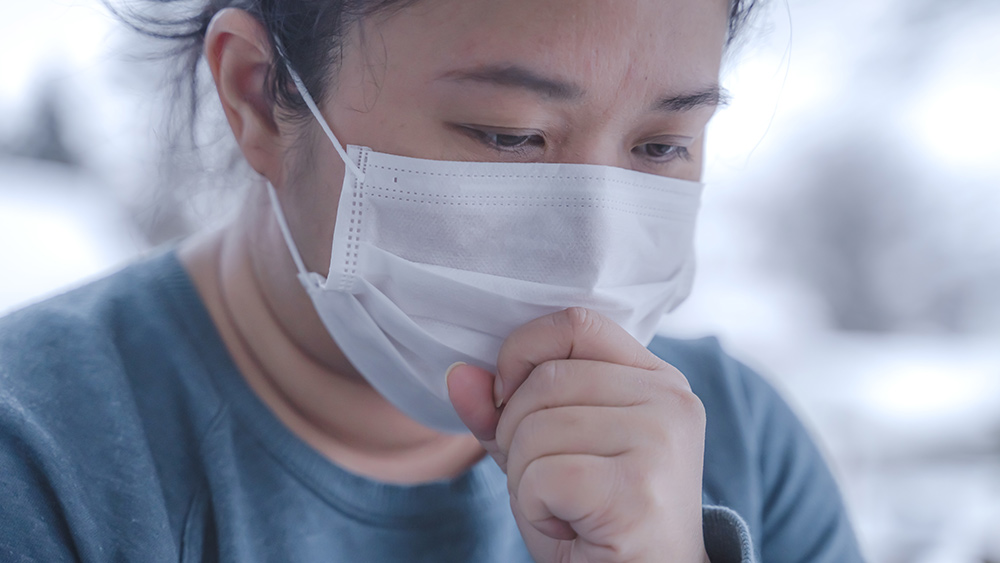Reduce back pain with these tips … plus effective exercises for improving posture
05/26/2020 / By Arsenio Toledo

The American Chiropractic Association defines posture as the position in which people hold their bodies. There are two kinds of posture: good posture and poor posture.
Good posture can reduce your back pain, decrease your risk of injury, improve blood circulation and reduce the amount of stress placed on your muscles and joints. Poor posture, on the other hand, can increase back pain, lead to poor blood circulation, impair respiratory function and cause a misaligned spine. This is why maintaining good posture at all times is very important.
Sitting
Sit with your back and shoulders straight. Keep your feet flat on the floor and avoid crossing either your legs or ankles. While keeping your shoulders back and straight, rest your forearms on the table. If you’re at work, adjust your work monitor so that your head isn’t pointed too high or too low. Your chin should be parallel to the floor.
Standing
Stand with your feet shoulder-width apart and flat on the floor. Like with sitting, your chin should be parallel with the floor. Stand tall as much as you can. Imagine a string pulling you up from your head. Pull your belly button toward your spine.
Lying down
You can still have good posture even while you’re lying down, as long as you make sure your spine is aligned and avoid twisting your waist. If you have back pain, placing a pillow underneath or between your legs can help relieve it. (Related: Improving your posture could help reduce muscle pain, joint pain and headaches.)
Improve your posture with these exercises
Maintaining your good posture will require a lot of work, at least until it becomes a habit. Fortunately, here are five exercises you can follow to support your posture.
Bridges
Bridges strengthen your gluteal and abdominal muscles, helping relieve any excess stress you may have on your lower back.
- Lie on your back. Bend your knees, keep your hands at your sides and your feet flat on the floor under your knees.
- Lift your hips. When doing so, engage your core and buttocks. Your buttocks and lower back should be lifted from the ground.
- Lower your hips back down to the starting position.
Child’s pose
This pose lengthens your lower back and opens your hips.
- Kneel on the floor. Keep your toes together. Your knees should be hip-width apart.
- Lean forward, extending your arms while doing so, with the palms facing down. Keep leaning forward until your hands and forehead touch the floor.
Hip flexor stretch
The hip flexor stretch opens your hips and improves balance and coordination.
- Kneel with your left foot and right knee on the ground. Your left knee should be bent at a 90-degree angle.
- Straighten your back and keep your head upright. Place both of your hands on your left thigh.
- Gently press your hips forward. Hold this position for 30 seconds.
- Repeat this stretch with your right foot and left knee on the ground.
Mountain pose
The mountain pose can help improve your posture by focusing on upright body alignment.
- While standing, keep your feet hip-width apart. Don’t lean on one foot. Spread your weight evenly.
- Don’t lock your knees, bend them slightly.
- Squeeze your thighs and tilt your tailbone downwards.
- Drop your shoulders down and back. This should make your chest come forward.
- Relax your shoulders, and allow your arms to fall to the sides of your body, with your palms facing forward.
- Inhale and exhale slowly for several breaths.
Plank
Planking strengthens your back and shoulder muscles, as well as your hamstrings, glutes and even your core. This encourages proper spine alignment.
- Get down onto your hands and feet. Your arms should be aligned with your shoulders. Keep your legs straight. Your body should be forming a straight line.
- Keep your shoulders back and your chest open.
- Hold this position for 30 seconds to one minute.
Maintaining good posture may take some time to master, but forming the discipline to improve yourself, especially when you like slouching, can have massive health benefits.
Sources include:
Tagged Under: back pain, bad posture, exercise, fitness, good posture, muscle pain, pain, pain relief, poor posture, posture, posture exercise, prevention, remedies, stress, stress relief




















